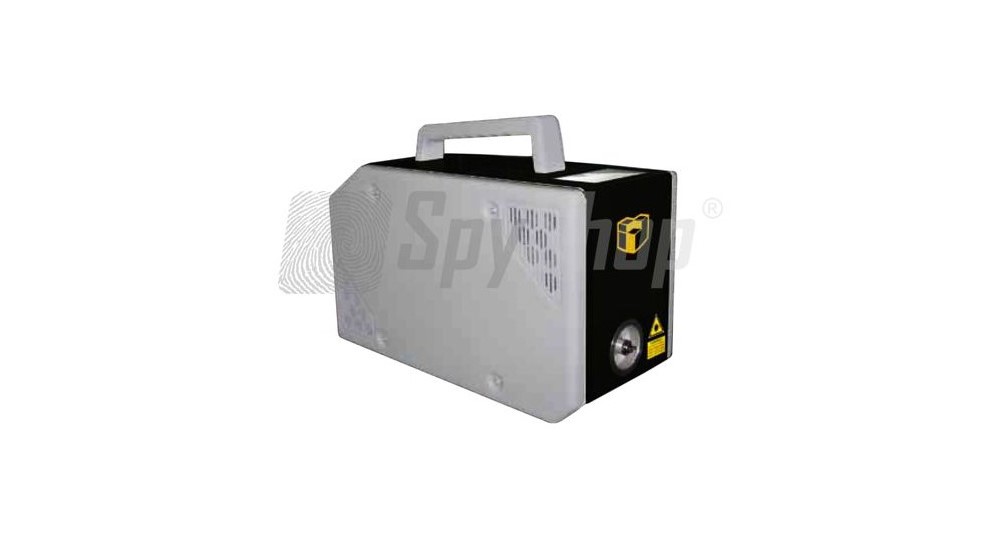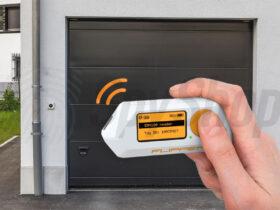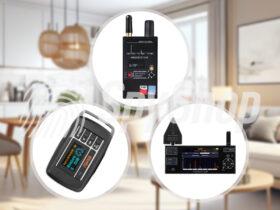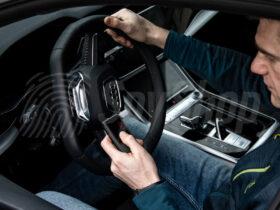Information about bombs planted in schools, offices or other facilities open to general public are an all too common occurrence nowadays. Every such situation requires proper proceedings – areas being in supposed danger need to be evacuated, searched and secured. More often than not these news prove to be nothing but false alarms. Nevertheless, every such operation is highly dangerous to the uniformed services and explosive disposal units conducting the search, as there is no way of telling which situation will involve an actual bomb.
We are all familiar with action film scenes with timers counting down seconds to the explosion. Clich‘ and exaggerated they might be, but for the explosive disposal specialists every passing second is a fight for life – their own as well as the others‘. That is why they need to operate with equipment that will allow them to shorten the search time as much as possible, and which guarantees to neutralise the threat. We are presenting specialist gear every bomb disposal unit should be equipped with. We would like to explore their manner of operation, as well as the types of explosive detectors.
Types of detectors
One of the more affordable, though not overly precise methods, is a a detection dog trained to search for explosives. The information we get from the dog is very scant – all we can learn is the location of the explosive device, but other, sensitive information, remain unknown.
Another method includes using an X-ray scanner. It allows to screen a suspicious person or luggage, revealing more information than a sniffer dog. The scanner will display the size and shape of the object, but not its exact nature.
To establish what kind of explosive the bomb is constructed with, it is advised to use so-called ‘sniffers‘ – detectors able to identify even the smallest particles of dangerous substances. They are known for their extreme precision of measuring, short time of analysis, and small percentage of distorted test results.
Explosive detector
The most technologically advanced devices are capable of detecting even the smallest traces of explosives – with accuracy of several ‘ppt‘ (parts per trillion, particles of a chemical compound in a trillion particles of a solution).
One of the most popular methods of particle detection is FAIMS (Field Asymmetric Ion Mobility Spectrometry). It is a rather sophisticated method, since ionisation is caused by corona discharges. It might sound complicated, but to get a better notion of how FAIMS works, we recommend viewing a video presentation:
Recently, we had an opportunity to have a closer look at a L-ION mobile explosive detector, developed by Inward Detection laboratories. Due to its simplicity of use and functionality, even those who have never had anything to do with it might find themselves encouraged to learn more about such devices.
Let us start at the beginning
L-ION is an extremely precise instrument, small of size, which enhances its operational capabilities. It can be effectively used even in very small rooms. If need be, it can be mounted on a bomb disposal robot, which will be brought up later on.
What can it detect?
- TNT (2,4,6-trinitrotoluene) – the compound itself is relatively safe, has low sensitivity to impacts, friction, and requires high temperature for detonation. Utilised as landmine filler and in blasting cartridges.
- RDX (hexogene) – utilised in primers and low-calibre artillery shells. Combined with TNT, it is used to fill aerial bombs, landmines, etc.
- PETN (pentaerythritol tetranitrate) – utilised to make e.g. semtex, and, among others, small shaped charges.
- C4 (Composition 4) – made by combining RDX with dissolved binding agent.
- Semtex – general purpose high explosive, malleable, resembling plasticine, sometimes called ‘Czech plastic explosive‘.
- Nitroglycerin – highly sensitive explosive.
- EGDN (ethylene glycol dinitrate) – used as a high explosive.
- Cyclonite – one of heterocyclic nitroamines, utilised as explosive material.
- Dynamite – explosive invented by Alfred Nobel (patented in 1867).
- Gunpowder – formerly used as high explosive – currently replaced in such applications e.g. by TNT.
- Other, derivative compounds
Work modes:
L-ION is able to identify certain compounds either by analysing the particles directly, or by detecting airborne vapours of explosive substances. For this purpose it utilises two separate air flow circuits. One is used to gather samples, the other uses clean, dry air to cleanse the detector, which prevents contamination of the device. L-ION can operate even in polluted and damp environment, with its accuracy unaffected. Additionally, it is equipped with a laser that ionizes the air intake nozzle, increasing detection range up to 60 cm.

Another method of particle detection utilises regular aluminium foil. A piece of foil containing a sample should be placed on the heater, allowing L-ION to present results automatically in a matter of seconds. Other devices require specialist tissues provided by the manufacturer in order to present accurate results. This in turn greatly increases the cost of operation. This particular model of detector requires no radioactive materials at all, which allows to use the device safely, as well as to store and transport it without any special precautions.
How does it work?
FAIMS analyses the samples, using its specialist software to compare the material with pre-loaded spectra of known explosives, their derivatives and compounds.
Operation
L-ION is very intuitive to handle, requiring no special training to use it. Neither in-depth knowledge, nor understanding of explosive substances‘ specifications is needed. Results are displayed on an LCD screen in form of clear and unambiguous information.
The detector is equipped with WiFi module, allowing the operator to remotely control it using a computer, a tablet, or a smartphone! As it was mentioned earlier, it can be mounted on a bomb disposal robot to gather samples remotely, risk free to the explosive disposal units and the device operator. Furthermore, it records the data from each sample so that it can be analysed later on.
Summary
Main features of the L-ION mobile explosive detector
- Highest sensitivity available – unparalleled resistance to distortions and external conditions
- Resistant to contamination – two separate air flow circuits, equipped with ionising laser increasing the system‘s sensitivity in vapour analysis mode
- Reliable detection of even the slightest traces of explosives – minimal probability of a false alarm
- Broad range of detected explosives, their derivatives and compounds
- Acoustic and visual alerts – notifying about detected dangerous substances
- FAIMS technology – does not require radioactive substances
- No calibration required – the device automatically adjusts the parameters to current conditions
- Low costs of operation – needs no specialist probes or technical gases
- 24 month warranty
Inward Detection offers few devices, but each of their products is manufactured with the utmost care, and is able to work in any conditions that might occur during bomb disposal operations. Remarkable accuracy, measurement time and scant percentage of erroneous results is enough to consider this device as one of the best in its category. It is my firm conviction that every bomb disposal unit should be issued with the L-ION system.











Leave a Reply